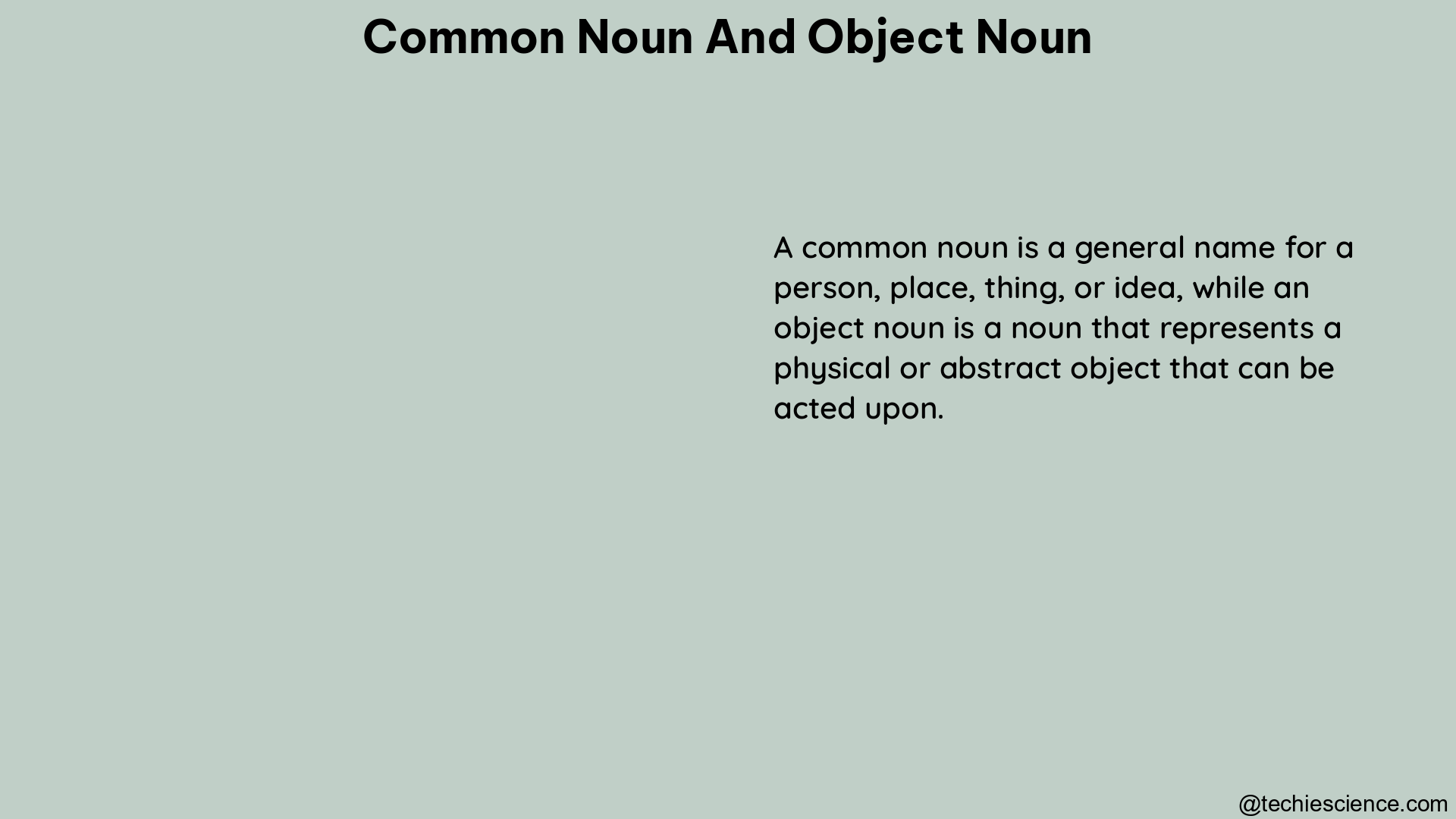Common nouns and object nouns are fundamental elements of English grammar, and understanding their nuances is crucial for effective communication. This comprehensive guide delves into the intricacies of these two noun categories, providing a detailed exploration of their definitions, classifications, grammatical specifications, and practical examples.
Understanding Common Nouns
A common noun is a word that represents a general or generic person, place, thing, or idea. These nouns are not specific and can be found frequently in everyday language. Unlike proper nouns, which refer to unique entities, common nouns are not capitalized unless they appear at the beginning of a sentence or in a title.
Types of Common Nouns
Common nouns can be further classified into two main categories:
- Concrete Nouns: These are tangible objects that can be perceived through the five senses. Examples include chair, apple, and dog.
- Abstract Nouns: These are intangible concepts that cannot be directly experienced through the senses. Examples include happiness, freedom, and love.
Concrete nouns can be further divided into subcategories based on their specific characteristics:
- Collective Nouns: These nouns represent a group of individuals or items, such as team, family, and herd.
- Compound Nouns: These nouns are formed by combining two or more words, such as bookshelf, sunflower, and ice cream.
- Countable Nouns: These nouns can be counted and have both singular and plural forms, such as book, chair, and student.
- Uncountable Nouns: These nouns cannot be counted and do not have a plural form, such as water, sand, and information.
Grammatical Specifications of Common Nouns
Common nouns follow specific grammatical rules:
- Capitalization: Common nouns are not capitalized unless they appear at the beginning of a sentence or in a title.
- Usage: Common nouns can be used as subjects or objects in a sentence.
- Articles: Common nouns can be preceded by articles (the, a, an) or determiners (this, that, these, those).
Understanding Object Nouns

An object noun, also known as an object, is a noun that receives the action of the verb in a sentence. It is the entity or thing that is affected by the action described by the verb. Object nouns can be either common nouns or proper nouns.
Examples of Object Nouns
- In the sentence “Jim threw the baseball,” “baseball” is the object noun because it receives the action of being thrown.
- In the sentence “Sarah read the book,” “book” is the object noun because it receives the action of being read.
Grammatical Specifications of Object Nouns
Object nouns follow similar grammatical rules as common nouns:
- Capitalization: Object nouns follow the same capitalization rules as common nouns, meaning they are not capitalized unless they appear at the beginning of a sentence or in a title.
- Usage: Object nouns are typically used as direct or indirect objects, receiving the action of the verb.
- Articles: Object nouns can be preceded by articles (the, a, an) or determiners (this, that, these, those), depending on the context.
Practical Examples
- Common noun: “The teacher gave the student a book.” (Here, “teacher” and “student” are common nouns, and “book” is an object noun.)
- Object noun: “The dog chased the ball.” (Here, “ball” is an object noun because it receives the action of being chased.)
Conclusion
Common nouns and object nouns are essential components of English grammar, and understanding their nuances is crucial for effective communication. By mastering the definitions, classifications, and grammatical specifications of these noun categories, you can enhance your language skills and become a more proficient writer and speaker.
Reference:
- Study.com – Common Noun | Definition & Examples: This resource provides a detailed explanation of common nouns, including their definition, usage, and examples.
- Scribbr – What Is a Common Noun? | Definition & Examples: This article defines common nouns, explains their differences from proper nouns, and provides examples and FAQs.
- Khan Academy – Common and proper nouns (video): This video lesson explains the difference between common and proper nouns, with examples and a transcript.

Hi! I am Bhabesh Sing. I have completed M.A in English, M.A in Vocal Music, and B.Ed. I am a creative writer. Currently, I am a Subject Matter Expert in English on this Platform.
Let’s connect through LinkedIn-https://www.linkedin.com/in/bhabesh-sing-660914ab